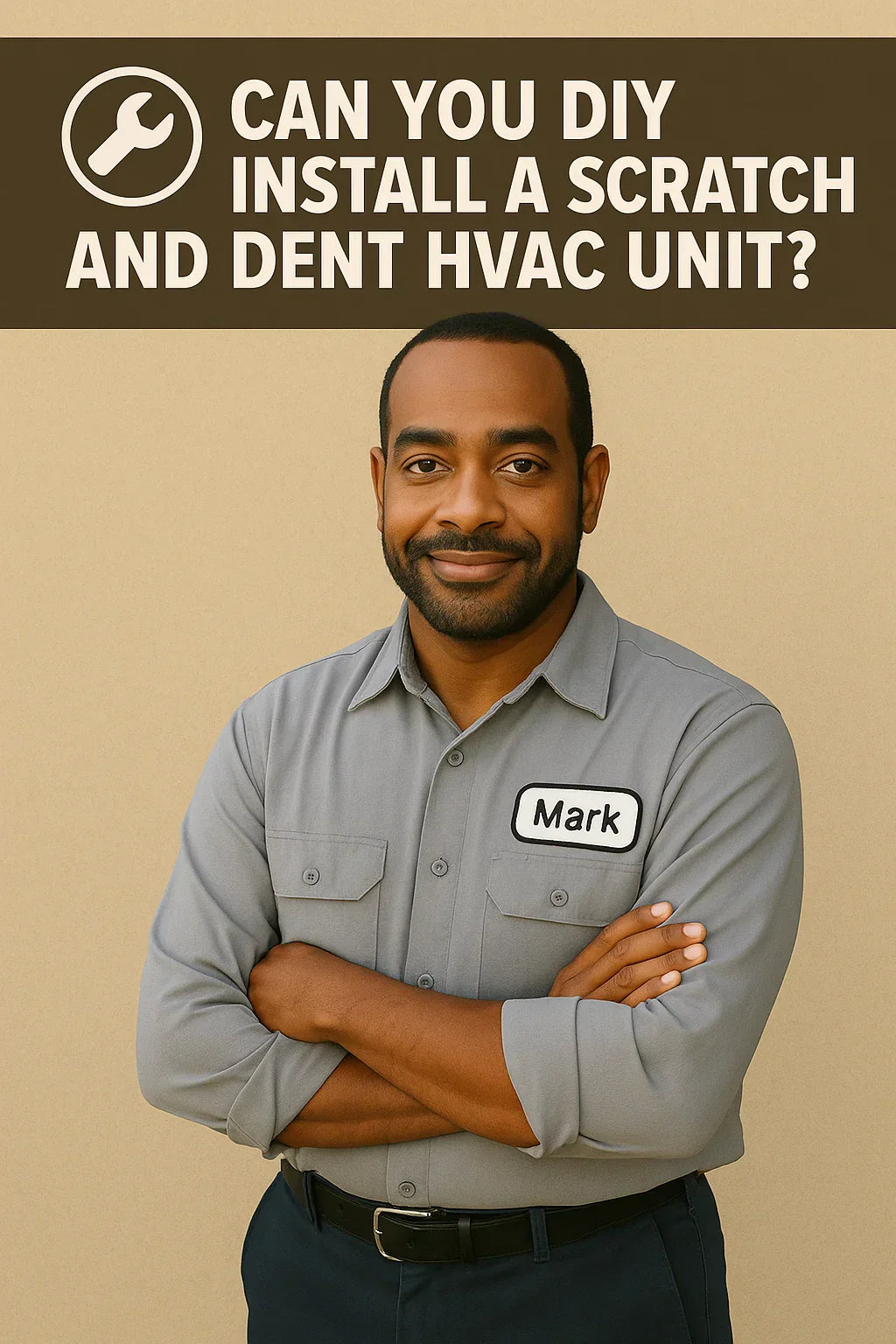🚪 Introduction: Mark Wants to Save, But Is DIY Worth It?
Mark Callahan found an excellent deal on a scratch and dent HVAC system, and like many homeowners, he’s now asking:
“Can I install this myself to save even more?”
While the idea is tempting, HVAC installation is not like installing a dishwasher. It involves complex electrical work, refrigerant handling, and code compliance that can impact warranty, safety, and system efficiency.
This guide will help Mark (and you) understand:
-
What HVAC installation involves.
-
What parts can be safely DIYed.
-
When to call a professional.
-
Risks vs. savings.
-
How to protect your warranty.
🛠️ Section 1: What HVAC Installation Involves
Core Steps in Installation:
-
Removing the old unit safely.
-
Handling and recovering refrigerant per EPA Section 608 regulations.
-
Electrical disconnection and reconnection.
-
Setting up the new unit on the pad or in the closet.
-
Connecting refrigerant lines and ensuring leak-free seals.
-
Sealing and connecting ductwork.
-
Testing refrigerant pressures and system functionality.
-
Configuring the thermostat for your system type.
✅ Energy Star: Proper Installation Matters
⚖️ Section 2: Risks of DIY Installation
While DIY can save money, it comes with risks:
-
Warranty Voiding: Many manufacturers require professional installation to honor warranty claims.
-
Legal Restrictions: Refrigerant handling requires EPA Section 608 certification.
-
Electrical Hazards: Incorrect wiring can cause shocks or fire hazards.
-
Incorrect Refrigerant Charge: Improper pressures can damage compressors and reduce system efficiency.
-
Code Violations: May result in fines or complicate home resale.
✅ EPA: Section 608 Certification
💡 Section 3: What Parts of Installation You Can Safely DIY
While full HVAC installation should typically be left to professionals, Mark can save on labor costs by handling safe, non-technical tasks, including:
-
Clearing and leveling the installation area.
-
Removing and responsibly disposing of old filters.
-
Installing a smart thermostat (if low voltage and compatible).
-
Adding insulation to refrigerant lines after hookup.
-
Cleaning and prepping ductwork for connection.
-
Checking pad leveling for outdoor units.
✅ HVAC.com: AC Installation Guide
🛑 Section 4: When to Call a Professional
Mark should call a licensed HVAC professional for:
-
Refrigerant Handling: Charging, evacuating, and leak testing.
-
Electrical Connections: Ensuring correct voltage, breaker sizing, and code compliance.
-
Combustion Venting: For gas furnaces.
-
Duct Sealing and Pressure Testing: For optimal airflow.
-
System Calibration: Ensuring SEER2 efficiency.
These steps protect safety, efficiency, and warranty coverage.
✅ Energy.gov: Heating and Cooling
💸 Section 5: Cost Comparison: DIY vs. Professional Install
Typical Costs:
-
Professional installation: $1,200–$3,000 depending on system type and complexity.
-
DIY can save these upfront costs, but risks include:
-
$400–$800 refrigerant correction if done improperly.
-
Warranty voiding leading to uncovered repair costs.
-
Potential damage requiring part replacements.
-
Example: Mark considered DIY refrigerant hookup but learned a mishap could void his warranty and lead to a $1,500 compressor replacement. He chose to DIY prep work and hired a professional for hookup, balancing savings and protection.
📈 Section 6: Protecting Warranty During DIY
If Mark plans to handle portions of the install:
-
Review seller and manufacturer warranty terms.
-
Confirm what work requires professional documentation.
-
Take photos of the unit and installation stages.
-
Keep receipts for professional services and system purchases.
-
Register the unit with the manufacturer promptly.
Many warranties require proof of professional refrigerant handling and electrical connections to remain valid.
🛠️ Section 7: Real-World Examples
Mark (Kentucky)
Handled pad prep, old system removal, and duct cleaning himself while hiring a pro for refrigerant and electrical work, maintaining his warranty.
Karen (Ohio)
Tried a full DIY install on her scratch and dent unit, leading to a refrigerant mishap and a $600 repair, losing most of the savings she aimed for.
Miguel (California)
Managed thermostat installation and refrigerant line insulation while using a pro for final hookups, balancing safety and savings.
✅ Conclusion: DIY Savings vs. Peace of Mind
DIY installation can save money on your scratch and dent HVAC system, but certain tasks should always be left to professionals for safety, efficiency, and warranty protection.
Key Takeaways for Mark: ✅ You can safely handle prep work, pad leveling, and low-voltage thermostat setup. ✅ Leave refrigerant and electrical work to licensed professionals. ✅ Always check warranty requirements before deciding on DIY. ✅ Document your process and register your warranty.
By balancing smart DIY tasks with professional services, Mark can maximize his savings while ensuring his scratch and dent HVAC system operates safely and efficiently.
➡️ Ready to save and stay protected?
Explore the Scratch and Dent Collection at The Furnace Outlet and plan your install confidently with your next system.
In the next topic we will know more about: Are Scratch and Dent HVAC Units Safe?







